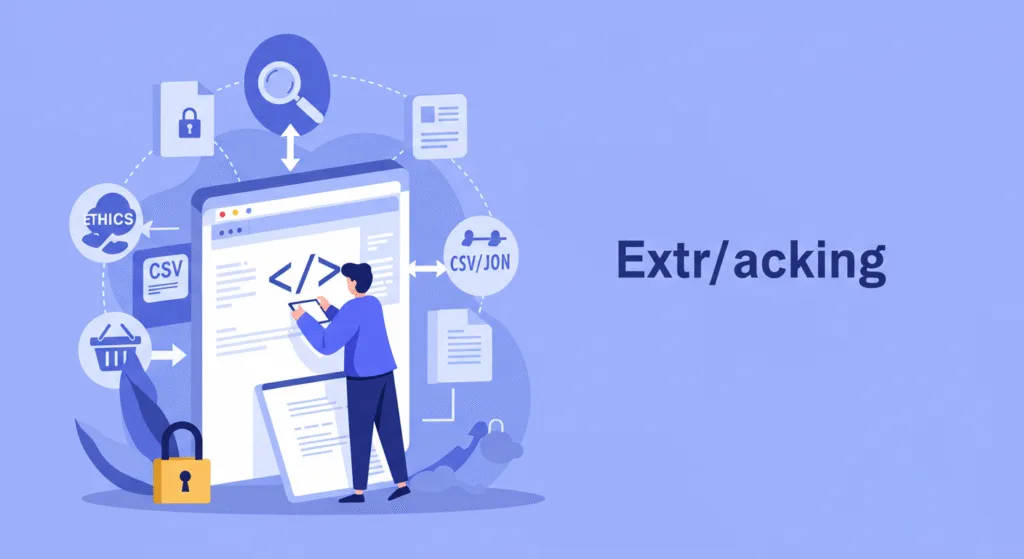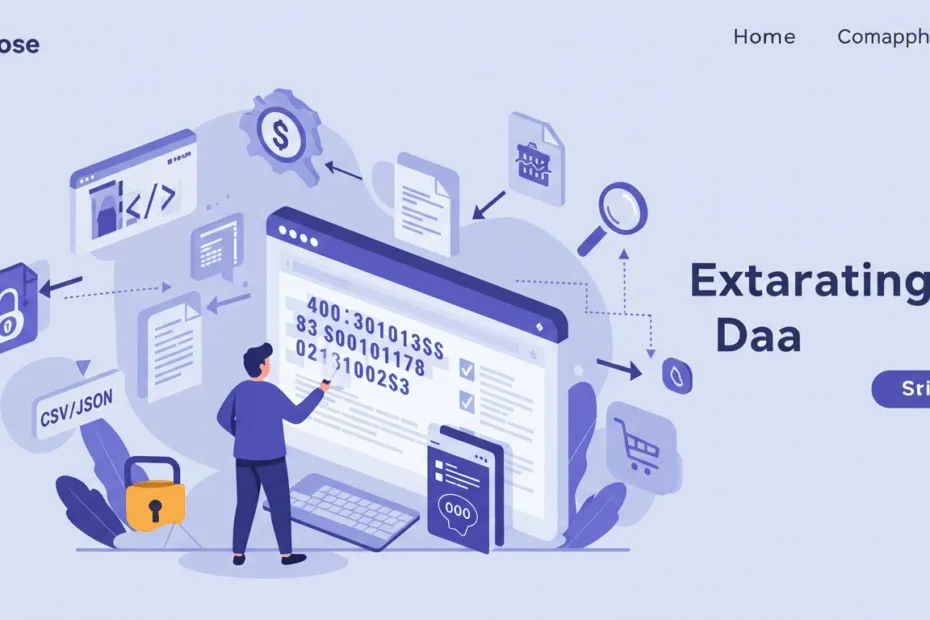Now that you’ve built your first web scraper using Python, it’s time to level up your skills.
In this section, you’ll learn how to:
- Scrape JavaScript-rendered pages
- Bypass CAPTCHAs and rate limits
- Use proxies and headers to avoid detection
- Handle authentication and login flows
- Build scalable scraping pipelines
Let’s dive into the world of advanced web scraping techniques .
🧪 1. Scraping JavaScript-Rendered Websites
Many modern websites (like single-page applications) load content dynamically using JavaScript after the initial HTML is loaded. Traditional scrapers like requests + BeautifulSoup can’t see this content because they don’t execute JavaScript.
✅ Tools That Can Render JavaScript:
| Tool | Description | Use Case |
|---|---|---|
| Selenium | Automates real browsers | Complex JS sites |
| Playwright | Fast and modern browser automation | Multi-browser support |
| Puppeteer (Node.js) | Headless Chrome control | SPA scraping |
| Requests-HTML | Lightweight JS rendering in Python | Simple use cases |
🐍 Example Using Selenium:
from selenium import webdriver
from bs4 import BeautifulSoup
import time
# Set up a headless browser
options = webdriver.ChromeOptions()
options.add_argument('--headless')
driver = webdriver.Chrome(options=options)
# Load the page
driver.get('https://example.com/ajax-content ')
# Wait for JavaScript to load
time.sleep(5)
# Get rendered HTML
html = driver.page_source
soup = BeautifulSoup(html, 'html.parser')
# Extract content as usual
for item in soup.find_all('div', class_='ajax-data'):
print(item.text)
driver.quit()📌 Tip: Always check if the site uses APIs to fetch data — sometimes it’s easier to scrape the backend API directly!
🛡️ 2. Bypassing Anti-Scraping Mechanisms
Websites often deploy anti-scraping tools to block bots. Here are common methods and how to work around them.
🔒 Common Anti-Scraping Tactics:
| Tactic | Description | Solution |
|---|---|---|
| IP Blocking | Blocks frequent requests from same IP | Use proxy rotation |
| CAPTCHA | Human verification challenge | Solve with OCR or bypass services |
| Rate Limiting | Restricts number of requests per minute | Add delays (time.sleep()) |
| User-Agent Detection | Identifies non-browser traffic | Set custom headers |
| Fingerprinting | Detects browser profile anomalies | Use real browser automation |
🐍 Example: Setting Custom Headers
import requests
headers = {
'User-Agent': 'Mozilla/5.0 (Windows NT 10.0; Win64; x64) AppleWebKit/537.36 (KHTML, like Gecko) Chrome/120.0.0.0 Safari/537.36',
'Accept-Language': 'en-US,en;q=0.9',
'Referer': 'https://www.google.com/ '
}
response = requests.get('https://example.com ', headers=headers)
print(response.text)📌 Tip: Rotate user agents and IPs to mimic human behavior and avoid detection.
🌐 3. Using Proxies and Rotating IPs
To avoid getting blocked, rotate your public IP address using proxy services.
💡 Proxy Types:
| Type | Description | Best For |
|---|---|---|
| Residential Proxies | Real IPs from home users | High anonymity |
| Datacenter Proxies | Fast but less anonymous | General scraping |
| Free Public Proxies | Unreliable and slow | Testing only |
🐍 Example: Using a Proxy with Requests
proxies = {
'http': 'http://user:pass@proxy_ip:port',
'https': 'http://user:pass@proxy_ip:port'
}
response = requests.get('https://example.com ', proxies=proxies)
print(response.status_code)📌 Tip: Services like Bright Data, ScrapeOps, and Oxylabs offer rotating proxy solutions tailored for web scraping.
🔐 4. Handling Login and Authentication
Some websites require logging in before accessing certain data. You can simulate login by sending POST requests with credentials.
🐍 Example: Logging In With Requests
import requests
session = requests.Session()
login_data = {
'username': 'your_username',
'password': 'your_password'
}
# Log in
session.post('https://example.com/login ', data=login_data)
# Access protected page
response = session.get('https://example.com/dashboard ')
print(response.text)📌 Tip: Use cookies from a logged-in session to stay authenticated during scraping.

🚀 5. Building Scalable Scraping Pipelines
For enterprise-level or long-term projects, structure your scrapers to be maintainable, efficient, and fault-tolerant.
🧱 Key Components of a Scalable Scraper:
- Request Retry Logic (with
tenacity) - Data Validation & Cleaning
- Distributed Scraping (using Scrapy + Scrapyd or Celery)
- Logging & Monitoring
- Database Integration (MySQL, MongoDB, etc.)
🐍 Example: Retrying Failed Requests
from tenacity import retry, stop_after_attempt, wait_fixed
@retry(stop=stop_after_attempt(3), wait=wait_fixed(2))
def fetch_page(url):
response = requests.get(url)
response.raise_for_status()
return response.text
html = fetch_page('https://example.com/retry-example ')📌 Tip: Use cloud-based orchestration tools like Airflow or Prefect to manage large scraping workflows.
📈 Bonus: Integrating Scraping with SEO Automation
Web scraping plays a crucial role in SEO automation , helping marketers extract:
- Competitor keyword rankings
- Backlink profiles
- Content performance metrics
- SERP trends
Related Article:
Part 1: Web Scraping ! The Ultimate Guide for Data Extraction
Part 2: Web Scraping! Legal Aspects and Ethical Guidelines
Part 3: Web Scraping! Different Tools and Technologies
Part 4: How to Build Your First Web Scraper Using Python
Part 5: Web Scraping Advanced Techniques in Python
Part 6: Real-World Applications of Web Scraping

